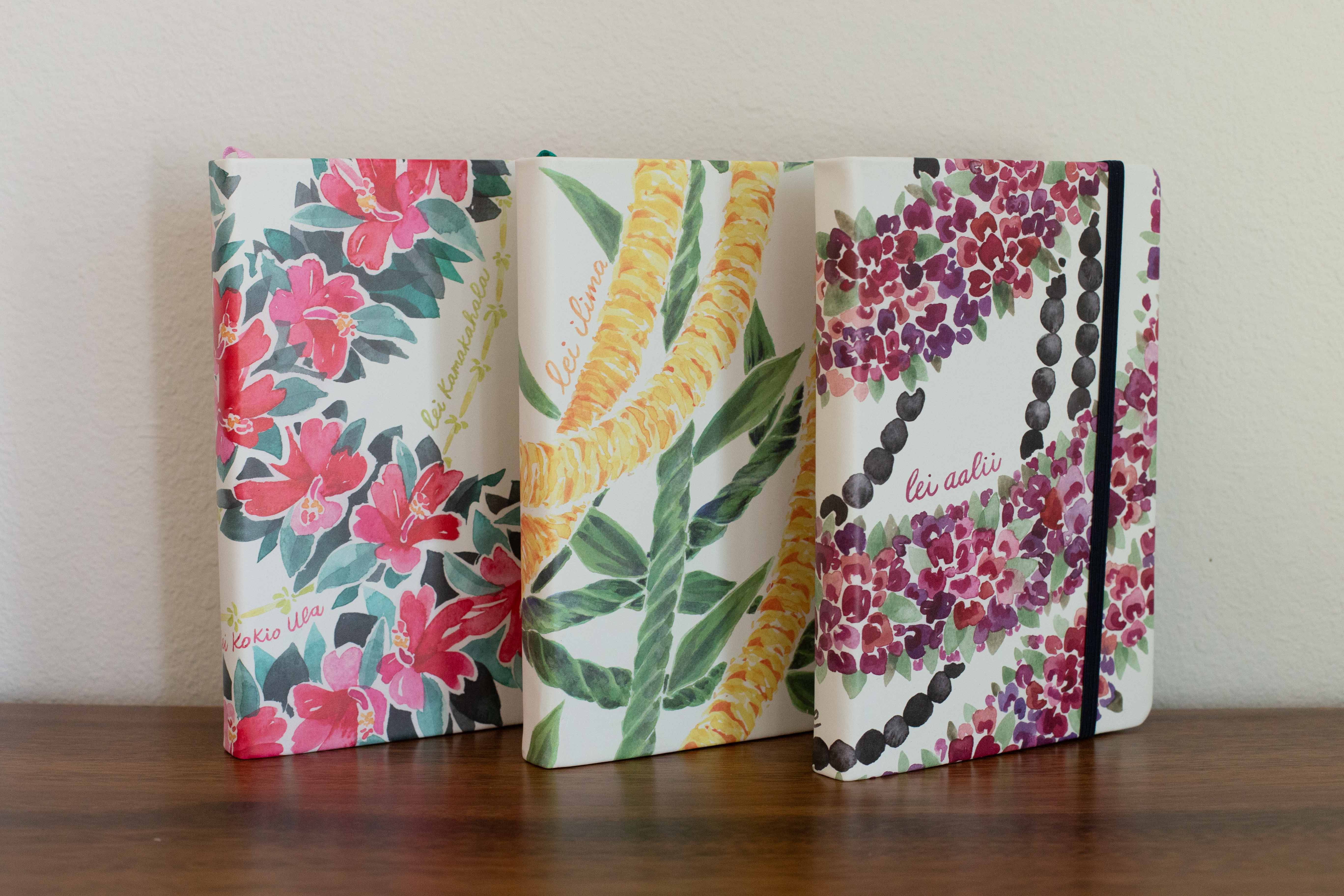What I Learned Chasing a Rainbow
The power of this collection is not in the individual prints itself, but as a whole. Each print is based on a native Hawaiian plant that holds that color of the rainbow. I designed each print to be very simple so that no one print would overpower or outshine another. This is a great metaphor for our lives and our lahui. Are we not all an important part of something greater? Do we not all want the best for ourselves and our ohana and our Hawaii. We all have our strengths and weaknesses, but one thing is for sure - we are strongest when we are together. Below each picture is more about each plant.

The species itself is named because of its many forms, Ohia is a native plant that exists all over the Hawaiian Islands with the exception of Niihau and Kahoolawe. It is one of the first sprouts from the black of a lava field and paves the way for new life. It is tied to the Hawaiian gods although I am not sure of which ones to list because the sources and books I looked into were all different.
It was used for lei, posts and rafters, rituals, hula, canoes, and child birth. It's many variations range from silvery leaves to rounded ones, from red flower buds to yellow or orange ones. One story I have with Lehua is that I never knew how to identify it correctly until I started drawing pictures of it and I remember the first time I recognized a tree outside was when I was on a hike in Laie. I saw the tree, knew what it was, and was filled with so much happiness and pride. I took lots of pictures and just stood in awe for a few minutes at the genealogy these plants have here in Hawaii.

As an opio, all I ever wanted was a lei ilima. I knew that it was a highly precious and highly coveted lei as it was very difficult and time consuming to make. In lei making they were also known for attracting the mischievous spirits that lead to fun and adventure!
Ilima grows upright as a shrub, but also close to the ground like a covering. It was used in a number of ways to treat various illnesses from infections to asthma. It is a beautiful and delicate flower and hundreds are required to make a single stranded lei.

Kaunaoa is a parasitic plant which is such an ugly title for a very vibrant and quite beautiful plant. It has tiny white flowers and grows like a vine, rooting into its host plant. I have to admit that the first time I saw it on the side of the road by castle hospital I thought it looked a little spooky with the way it grows and spreads over the tops of other plants, but that it why I am that much more impressed with Hawaiians for finding a way to use it!
Kaunaoa was used as a medicine to induce throwing up and in childbirth to get the placenta out after. It might be more commonly known today for its use in lei. Taking the vine and twisting it together makes beautiful orange/yellow strands of lei. Way to go Hawaiians for seeing the beauty and use in everything!

Maile grows as a shrub as well as a vine. There are multiple varieties some of which are not native. Maile is famous for its smell and how it is used in the most iconic (in my opinion) of Hawaiian lei. I don't know much about this from experience, but I read that maile is sacred to hula and the Hawaiian gods of hula. Used on their alters and as an adornment while performing dances.
Maile also has healing properties - used on cuts, sores, and infections. A maile lei for your hair is my favorite mele - the first one I learned on the ukulele and the one that my papa taught my dad who taught me. As I'm writing this though I am a little confused why the lei would be for your hair...🤔...thoughts? Guesses?... I think I can count on one hand the number of times I have received a maile lei. High school graduation for sure... I'm can't remember if there was another time.

It reminds me of a succulent (are succulents still really trendy?), but itʻs not one - it is our very own native hinahina. Hinahina has beautiful silvery leaves that have developed to block out sun and keep in moisture. Makes sense to have these adaptations because hinahina is found in the sand by the shore. Hot days in the sun and sandy ground left this plant the choice to evolve and thrive or give up and whither away. What a great metaphor for all of us going through our own version of the refinerʻs fire.
Hinahina is used in lei and it makes a beautiful full lei of silver crowns. It was also used in laau lapaau to treat thrush, asthma, and womb disorders. I am finding that most of these plants were used in womb and child bearing. How interesting! You only have so many options when you are that advanced.

Ukiuki the final of native plant of the collection has stole my heart the first time I saw it in person. It has the most beautiful and vibrant berry that is nothing like I've ever seen before and nothing I would have thought was Hawaiian! A lesson that we are all full of beautiful surprises. Its berry was used as a dye.
Sources for the information shared: Amy Greenwell's Guide to Native Hawaiian Plants and The Bishop Museum's Ethnobotany Database








Leave a comment